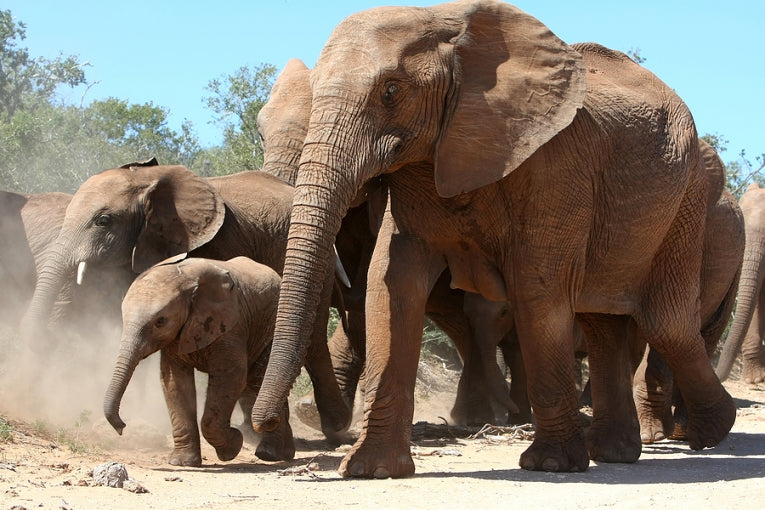Inside your ovaries is a yellow body called the corpus luteum (Latin for yellow body.) it secretes the progesterone which maintains your baby during early pregnancy. Now the parasitic nature of mammalian babies, feeding from the mother's blood, is rarely recognised. It is unique in physiology but varies among the placental mammals in how the anatomy adapts.
In this case, the ovary has an average of 5.4 (multiple) yellow bodies in the elephant and a 12-16 week oestrous cycle, as compared with 4 weeks in humans, and a single yellow body for each child. Again, where humans start secreting progesterone from the placenta, to replace that from the yellow body, elephants don't!
Fifteen pregnant Asian and two pregnant African elephants were examined in zoos for this paper published in the Proceedings of the Royal Society B: Biological Sciences, today, using ultrasound scans. A mean length of pregnancy of 647 days (22 months) was observed. The researchers, primarily from the Leibniz Institute in Berlin, comprise of Imke Lueders, Cheryl Niemuller, Peter Rich, Charlie Gray, Robert Hermes, Frank Goeritz and Thomas B. Hildebrandt. These scans give some idea of how they observed the embryos developing with many yellow bodies (CL) in the ovaries:

Credit: © Imke Lueders
Ultrasonographic images from the ovary
(a) Ovulatory ovary showing multiple corpora lutea (CLs), (i), ovulatory CL, (ii), acCLS, arrow heads, ovarian border (day 162);
(b) depicts minimal blood streams of two CL
What happened was that auxiliary yellow bodies (or CLs) formed in addition to the one CL per child we would have in women. With no hormone coming from the placenta later, these multiple CLs provide progesterone with which to maintain the uterus lining for all stages of the long pregnancy.
The only other known method of supplying the hormone is from the foetus' gonads. This surprising self-preservation method however may not actually be used by elephants. This anatomical variation in the ovary is the key to maintaining that long gestation. (The lengthy pregnancy is thought to slow ageing in order to push the average life-span to 65 years).
Following a long gap of up to 45 days between ovulation and implantation, the authors maintain that the yellow bodies are used to keep up the uterine wall for 22 months. The Proboscid group of the elephants is related to the Sirenia (manatee and dugong) and they have been found with multiple CLs too.
It's likely that they, too, have this very successful mechanism in their physiology that provides a "top-notch" pregnancy maintenance system. The elephants' group have all apparently used a strategy of 4-6 year investment (with gestation as well as milk provision, etc.) for a single calf. (only 1% of elephant births are of twins).
Superb research like this not only gives us insight into the evolution of these fabled African mammal groups. It inevitably leads also to novel questions about our own medical condition when women develop hormonal controls over their own body as well as our own bodies in their womb.










